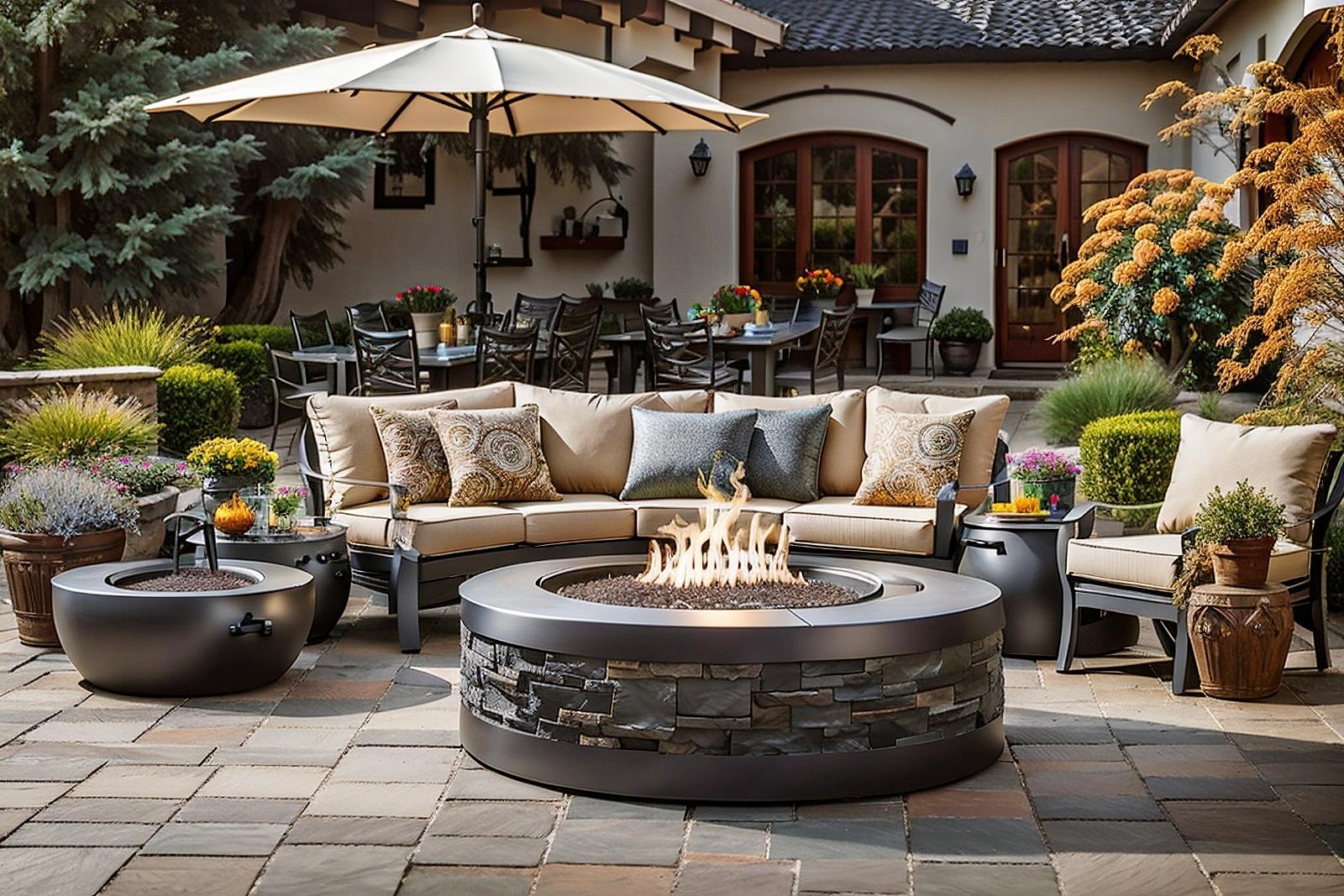What is the meaning of the furniture term Shaded Marquetry?
Answer: Shaded marquetry is a method of adding depth and dimension to a marquetry design by employing a technique called hot sand shading or toning. Hot sand shading involves using heated sand to slowly and gradually darken specific areas of the wood veneer to create a shaded effect... read more
| Previous term: Sgabelle | Next term: Shaker Furniture |
Premium Indoor Outdoor Decor
Find the perfect pieces to create an inviting and stylish ambiance, and transform your patio into a stunning haven of relaxation and style. Discover a wide range of fire pits, water fountains, patio furniture, indoor-outdoor decor, garden planters, and patio umbrellas for your outdoor oasis.

Find the perfect pieces to create an inviting and stylish ambiance, and transform your patio into a stunning haven of relaxation and style. Discover a wide range of fire pits, water fountains, patio furniture, indoor-outdoor decor, garden planters, and patio umbrellas for your outdoor oasis.

What is the meaning of the furniture term Shaded Marquetry?
This technique is typically used to add subtle gradients and shadows to different elements within a marquetry composition. Here is a step-by-step guide on how to achieve shaded marquetry using hot sand shading:
1. Design your marquetry pattern: Begin by creating a design for your marquetry artwork. This can be done by drawing or transferring a pattern onto the wood veneer.
2. Cut and prepare the veneer pieces: Use a scroll saw or other cutting tools to carefully cut out the various shapes and pieces required for your design. Sand the cut veneer pieces to ensure smooth edges.
3. Assemble the design: Arrange the veneer pieces on a stable surface, such as plywood or MDF, according to your design. Secure them together using masking tape or veneer tape.
4. Prepare the sand shading container: Take a metal container, such as an old frying pan or baking tray, and fill it with clean, dry sand. Place it on a heat source, such as a stovetop or a hot plate, and heat the sand to a temperature that allows it to darken the veneer but not burn it. It may take some trial and error to find the optimal temperature.
5. Apply the sand shading: With the prepared container of hot sand, use a heatproof glove or tongs to carefully hold the container and gently pour the heated sand onto the veneer surface. Start with a small amount and gradually increase if needed. Tilt the tray or use a brush to spread the sand evenly and cover the desired area.
6. Monitor the shading process: Watch closely as the heated sand darkens the veneer. Use a thermometer to ensure the temperature does not exceed the safe range for the wood. Adjust the sand quantity and the duration it remains in contact with the veneer to achieve your desired shading effect. You can repeat the process for multiple layers of shading.
7. Seal and protect the marquetry: Once you have achieved the desired shading, carefully remove the excess sand from the veneer surface. Use compressed air or a soft brush to clean the veneer pieces. Apply a protective finish, such as polyurethane or varnish, to seal the marquetry and enhance its appearance.
By using the hot sand shading technique, you can add depth, dimension, and visual interest to your marquetry artwork, resulting in a more realistic and intricate design. Experiment with different shades and gradients to create stunning shaded marquetry compositions.
Method of shading or toning marquetry with hot sand.
This technique is typically used to add subtle gradients and shadows to different elements within a marquetry composition. Here is a step-by-step guide on how to achieve shaded marquetry using hot sand shading:
1. Design your marquetry pattern: Begin by creating a design for your marquetry artwork. This can be done by drawing or transferring a pattern onto the wood veneer.
2. Cut and prepare the veneer pieces: Use a scroll saw or other cutting tools to carefully cut out the various shapes and pieces required for your design. Sand the cut veneer pieces to ensure smooth edges.
3. Assemble the design: Arrange the veneer pieces on a stable surface, such as plywood or MDF, according to your design. Secure them together using masking tape or veneer tape.
4. Prepare the sand shading container: Take a metal container, such as an old frying pan or baking tray, and fill it with clean, dry sand. Place it on a heat source, such as a stovetop or a hot plate, and heat the sand to a temperature that allows it to darken the veneer but not burn it. It may take some trial and error to find the optimal temperature.
5. Apply the sand shading: With the prepared container of hot sand, use a heatproof glove or tongs to carefully hold the container and gently pour the heated sand onto the veneer surface. Start with a small amount and gradually increase if needed. Tilt the tray or use a brush to spread the sand evenly and cover the desired area.
6. Monitor the shading process: Watch closely as the heated sand darkens the veneer. Use a thermometer to ensure the temperature does not exceed the safe range for the wood. Adjust the sand quantity and the duration it remains in contact with the veneer to achieve your desired shading effect. You can repeat the process for multiple layers of shading.
7. Seal and protect the marquetry: Once you have achieved the desired shading, carefully remove the excess sand from the veneer surface. Use compressed air or a soft brush to clean the veneer pieces. Apply a protective finish, such as polyurethane or varnish, to seal the marquetry and enhance its appearance.
By using the hot sand shading technique, you can add depth, dimension, and visual interest to your marquetry artwork, resulting in a more realistic and intricate design. Experiment with different shades and gradients to create stunning shaded marquetry compositions.
Method of shading or toning marquetry with hot sand.
Copyright 2026 - Furniture Glossary. All rights reserved.
